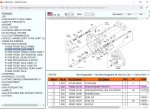I lost the front drive on my 4X4 L39TL and through this forum found that replacing one or both of the forward shaft couplings would likely be an easy fix. The parts came in and so today I got underneath and started to remove the spring pins. With the front pin removed, a final hammer whack on the pin driver addressing the rear pin resulted in a heavy rainfall of hydraulic fluid coming out from the rear shaft housing and the clutch housing drain (split pin plug). I'm sure I did something wrong and it'll be expensive to resolve, but I don't know what. Does anyone have an idea what now needs to be fixed and how best to do it? Is this something a low-level, backyard mechanic can deal with or is it heading to the Kubota service center.
Attachments
-
528.3 KB Views: 232



